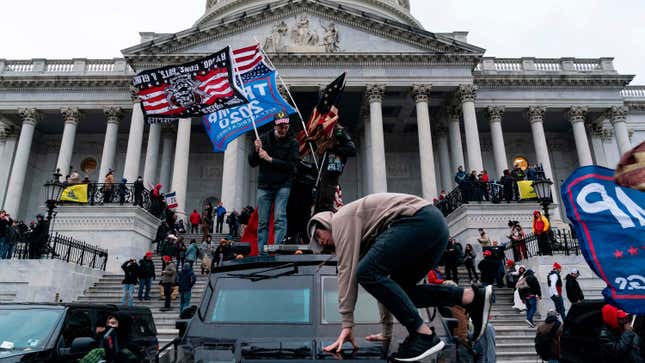Apparently Some Officials Thought It Would Be Bad 'Optics' to Call the National Guard on Rioters
NewsPolitics

While hundreds of Trump supporters laid siege to the Capitol on Wednesday—which they did with ease due in part to local police’s lack of preparedness—some officials worried about the “optics” or “visual” of calling in backup.
In an exclusive interview with the Washington Post, Capitol Police Chief Steven Sund, who has since resigned, said his calls to bring in the National Guard were ignored in favor of these concerns. According to Sund, House Sergeant at Arms Paul Irving said he didn’t want to declare an emergency ahead of Wednesday’s demonstration—which many people had reason to believe would include attempts to breach the Capitol—because he was worried about the “optics” of doing so.
When Sund called the Pentagon to request assistance after Trump supporters entered the Capitol, a top Army official reportedly rejected his request on similar grounds.
“I don’t like the visual of the National Guard standing a police line with the Capitol in the background,” the official said.
Of course it is convenient for Sund to portray himself as one of the sole law enforcement authority to accurately assess the severity of the situation, and to attribute the immense failure to control the protests to other bad actors who wouldn’t listen to him. This explanation also requires us to forget that some members of Sund’s police force seemed to oblige Trump supporters, appearing to open gates to allow them to enter the Capitol, reportedly providing them with directions to lawmakers’ offices, and fist-bumping or taking selfies with them.
Still, Sund’s account of officials’ distaste for meeting violent protesters with an appropriate response only lends more credence to a broader narrative explaining law enforcement’s failure: That deep-seated bias contributed to officials’ inability to perceive the degree of threat posed by a majority-white, conservative mob. Their appeals to appearances—How would it look to deploy troops to control the protesters?—also echo those of the president, who allegedly objected to the protests on the basis of aesthetics as well.
On Friday, New York magazine’s Olivia Nuzzi reported: “The adviser told me that Trump expressed disgust on aesthetic grounds over how ‘low class’ his supporters looked. ‘He doesn’t like low-class things,’ the adviser said …”
In this case, a professed aesthetic sensibility merely disguises racist beliefs, conscious or unconscious. There is no pretty picture to make of a white supremacist mob, unless one does not see white supremacists when they gaze upon it.